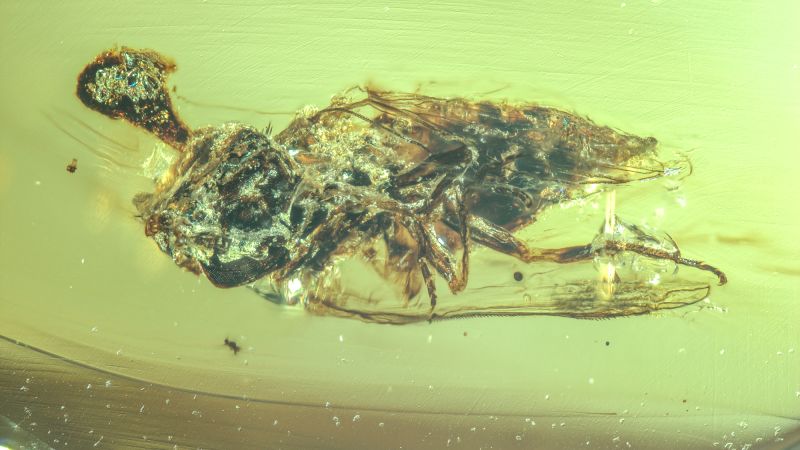
In a remarkable discovery that bridges the worlds of science fiction and ancient history, researchers have uncovered a 99-million-year-old piece of amber containing a fly overtaken by a parasitic fungus. This find, unearthed in Myanmar, offers a rare glimpse into the prehistoric ecosystems where these mind-controlling parasites thrived, potentially alongside dinosaurs.
The discovery was made by a team from the Nanjing Institute of Geology and Palaeontology, part of the Chinese Academy of Sciences, and it includes not only the infected fly but also an ant pupa encased in amber, both showing signs of fungal infestation. Yuhui Zhuang, a doctoral student at Yunnan University, highlighted the significance of these specimens in understanding the evolutionary history of parasitic fungi.
The Science Behind the Discovery
The fungus in question belongs to the Ophiocordyceps group, which is known for its ability to hijack the brains of insects, particularly ants, and manipulate their behavior. This phenomenon has inspired popular culture, most notably the video game series “The Last of Us,” where a similar fungus infects humans in a fictional setting. However, in reality, these fungi have so far only been known to affect insects.
The amber-encased specimens provide a unique opportunity for scientists to study the early interactions between fungi and insects. According to Zhuang, these ancient samples could help determine whether the fungi are ancestors of those that currently affect carpenter ants, offering insights into the evolutionary adaptations that have enabled these parasites to survive for millions of years.
Implications for Modern Science
This discovery is not just a window into the past; it has significant implications for modern science. By understanding the evolutionary history of these fungi, researchers can better comprehend the complexities of parasitic relationships and their impact on ecosystems. The study of these ancient interactions may also shed light on the resilience and adaptability of fungi, which could have broader implications for ecology and evolutionary biology.
Moreover, the preservation of such ancient specimens in amber provides an unparalleled opportunity to study the morphology and anatomy of both the host and the parasite in exquisite detail. This level of preservation can lead to new insights into the biology and ecology of organisms that lived millions of years ago.
Broader Scientific Context
While the discovery of the ancient zombie fungus is fascinating, it is part of a broader trend in paleontological research that is uncovering new insights into Earth’s history. Recent advancements in technology and methodology have allowed scientists to explore previously inaccessible aspects of the fossil record, leading to groundbreaking discoveries.
For example, the Vera C. Rubin Observatory has recently captured the first cosmic imagery using the largest camera ever built, revealing over 2,000 newly detected asteroids and millions of distant galaxies. Similarly, drone footage has documented orcas in the Salish Sea using kelp as grooming tools, a behavior never before seen in marine mammals.
Looking Forward
The discovery of the ancient zombie fungus trapped in amber is a testament to the enduring mysteries of our planet’s history. As researchers continue to explore these ancient ecosystems, they may uncover further insights into the evolutionary processes that have shaped life on Earth.
As the field of paleontology advances, each new discovery adds a piece to the puzzle of Earth’s past, offering a deeper understanding of the natural world and its complex interdependencies. These findings not only enrich our knowledge of history but also inspire future research and exploration.
For those captivated by the wonders of science and the mysteries of the ancient world, the story of the zombie fungus is a reminder of the incredible resilience and adaptability of life, both past and present.







